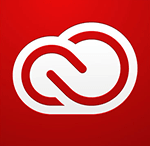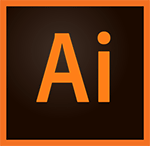

The Big Three
Ever wonder how a graphic designer creates works of art that tie together seamlessly when printed on any medium? Our own Director of Print Media, Miss Jodi Miller, reveals the three base tools used by any great graphic artist in today's world.
The Big Three
Ever wonder how a graphic designer creates works of art that tie together seamlessly when printed on any medium? Our own Director of Print Media, Miss Jodi Miller, reveals the three base tools used by any great graphic artist in today's world.
When it comes to print media, there are three vital tools in every graphic designer's toolbox. These allow your brand (and even ours) to be created and displayed in stunning fashion in any scenario. From the smallest flyer to the largest billboard, these programs help create flawless works of art to pump your brand in all aspects.
You thought I was going to talk about the automotive industry, didn’t you?
Nope! I am talking about the big three programs that I use most when creating a project for print media: InDesign, Illustrator, and Photoshop.



Adobe Photoshop is for 
Generally when I tell people what I do, usually their first question is “What computer program do you use?” I always tell them, “InDesign”. Why? It allows me to design a print project by merging images that I have edited in Photoshop, take elements I have created in Illustrator, and ultimately design a finished product that fits the client’s needs. Yes, I use all three programs, but InDesign brings them harmoniously together for me and the projects I work on.
So in a digital world of video editing, web development, and photography, Adobe Creative Cloud still uniquely adapts their programs to cater to the print designer. And for this, I am forever grateful!
Share Article
Topics
More from Jodi Miller
Keywords
- Graphic Design
- Print Media
- Adobe Creative Cloud
- Photoshop
- InDesign
- Print Advertising
- Illustrator



 Addis Enterprises LLC.
Addis Enterprises LLC.




